ABOUT THE AUTHOR

ROBERT MITCHELL
RINKER BUCK began his career in journalism at the Berkshire Eagle and was a longtime staff writer for the Hartford Courant . He has written for Vanity Fair , New York , Life , and many other publications, and his stories have won the Eugene S. Pulliam National Journalism Writing Award and the Society of Professional Journalists Sigma Delta Chi Award. He is the author of the memoirs Flight of Passage and First Job . He lives in northwest Connecticut.
 RinkerBuck
RinkerBuck
MEET THE AUTHORS, WATCH VIDEOS AND MORE AT
SimonandSchuster.com
authors.simonandschuster.com/Rinker-Buck
ACKNOWLEDGMENTS

CROSSING THE OREGON TRAIL AND then spending more than two years writing about it constantly reminded me of Daniel Boorstins description of the covered wagon as plainly a community vehicle that required working in groups. Even while lost in the remote Wyoming desert, or struggling over the lava-rock abyss of Idaho, I was always confident that I could find help ahead. In this way our covered wagon trip was not so much an adventure shared by two brothers but a display of the communal ingenuity and hospitality still to be found in the American West. The reassuring feeling of being handed off every day from rancher to rancher, and from trail expert to trail expert, remains my strongest impression of the trip. Likewise, my research into the history of the trail was built upon the heroic scholarship of many who came before me.
My brother Nick deserves most of the credit for the success of our trip. His outstanding horsemanship, mechanical and harness-making skills, alacrity at making friends, and ability to get by with limited resources almost anywhere made the trip possible. The difficulty of finding friends and family members who can rise at dawn and then sustain physical activity on a project all day has been a major inconvenience in my life, but Nick made an ideal partner. I am especially grateful for his decision in Schickley, Nebraska, to remain with the trip. It is rare for two brothers to share a journey as unique as this, and I will always remember his gift to me.
The Oregon-California Trails Association (OCTA) of Independence, Missouri, struggles with a small staff and budget against such modern threats to the trail as mining and energy projects, housing developers, and hordes of dirt-biking enthusiasts. Chapter presidents and volunteers in the eight states through which the trails pass perform the largely unrewarded functions of marking the trail, applying for preservation grants, and testifying at court and federal agency hearings when the trail is threatened with new developments or road-building. OCTA also maintains an invaluable website devoted to the history of major trail stops and pioneer histories and publishes the Overland Journal , an excellent quarterly on selected trail topics and research that I often used while compiling the history sections of my book. Before we left on our trip, association manager Travis Boley and headquarters manager Kathryn Conway shared with us maps, insights on the trail, and a complete list of OCTA contacts in each state. This help proved invaluable during our four-month journey.
OCTA also published Randy Brown and Reg Duffins Graves and Sites on the Oregon and California Trails , and Browns Historic Inscriptions on Western Emigrant Trails , which were immensely useful toward understanding the history we were passing and provided exact directions to trail sites. The compendium of geodetic maps on the trail originally compiled by OCTA founder Gregory Franzwa, Maps of the Oregon Trail , published by the Patrice Press in St. Louis, was indispensable for finding our way in the backcountry and narrow canyons of Wyoming and Idaho.
Philip Ropp of Ropps Mule Farm in Jamesport, Missouri, fulfilled the one essential requirement I placed before him: selling me a team that could make it to Oregon. Yes, Bute was a laggard with pigeon-toed hooves, and Beck was our Lizzie Borden of the trip, but Jakes imperturbability and good sense made up for this. Buying a team as quickly as I did and then realizing where I had erred only enriched the pioneer experience for me. Ropp and his neighbor, machinist and blacksmith Ivan Schrock, made it possible for us to get all our wagon modifications done on time. Elmer Beechy and the leatherworkers at the Jamesport Harness Shop quickly made all the adjustments and fabricated the extra parts I needed for our rig. Beechy taught me a valuable lesson in jumping off economics by quickly flipping my trade-in saddle at a profit. God bless the Amish for their industriousness and fun.
Don and Connie Werner at the Werner Wagon Works in Horton, Kansas, maintain one of the best wagon restoration shops in the country and produced a serviceable rig under a tight deadline. I realize now that the problems we later had with the wheels and brakes on our Peter Schuttler wagon were mostly the result of my unyielding ambition to reach Oregon clashing with modern-restoration standards. The Meader Supply Corporation of Rochester, New Hampshire, promptly filled our orders for harness replacements and shipped them ahead of us on the trail. Dan Hathaway of Illusion Farm in Fryeburg, Maine, was always available when Nick called for advice on the veterinary care and shoeing of the mules, and indeed deserves a great deal of credit for the excellent shape they were in when we reached Oregon. Ripley and Susan Swan of Hallelujah Farm in Lisbon, Maine, also provided much needed equine and human help.
In Kansas, I want to thank muleman Doyle Prawl of Troy for helping us haul the wagon and mules across the Missouri River and then building wagon parts. The groundskeepers at the Brown County Agriculture Museum in Hiawatha and the Four Mile Corner Rest Area in Sabetha maintain beautiful camping facilities for transients like us. Pony Express reenactor Frank Wessel and his wife, Cheryl, welcomed us to their farm in Axtell for an overnight camp. In Marysville, Ken and Arleta Martin of the Oregon-California Trails Association graciously interrupted their schedules to escort us around the many trail sites in the area. More than a dozen people in town dropped down to our camp at the fairgrounds to offer help and gifts of food and free hay. The volunteers at the Habitat Thrift Shop in Marysville left the door of their shop open at night so that we could curl an extension cord outside to recharge our cell phones. The staff at the Hollenberg Ranch State Park graciously allowed us to use the restored Pony Express station there when we needed shelter from heavy rains.
Riding across Nebraska in a covered wagon was a monthlong immersion therapy in kindness, a reminder of the essential decency of my country. When thunderstorms surrounded us just after we crossed the Kansas line, Norman Rupprecht of Odell, Nebraska, flagged us down at a rainy crossroads and led us to safety nearby at an abandoned farm, then returned the next morning to help us with chores and run errands while we were stranded for another day. A couple camping next to us at the Rock Creek Station equine park drove me to the Fairbury Sale Barn so I could buy replacement harness parts for the team. At Shickley, when we were again trapped by storms, Don and Shirley Kempf and Will and Margie Swartzendruber allowed us to camp at their farm for two nights, take showers, and borrow their pickup, and even took us along to their church supper. My concept of trail family began to form at Shickley with the Kempfs and Swartzendrubers. I have already visited them twice since, and they will be lifelong friends. Also at Shickley, retired cowboy Bill Eich of Geneva, Nebraska, adopted us as his trail project and followed our wagon tracks for three nights to visit us in camp, running down the harness parts, camping equipment, and plumbing supplies we needed to add an additional water barrel. I still wear the silk cowboy bandanna that Bill gave me to protect my face and neck against the dust and sun. I have lost count of the number of happy Nebraskans who dropped into our camp in the evening and brought us food, water, and free bales of hay.


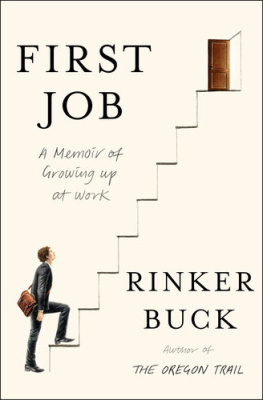
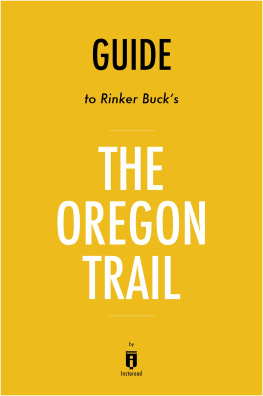
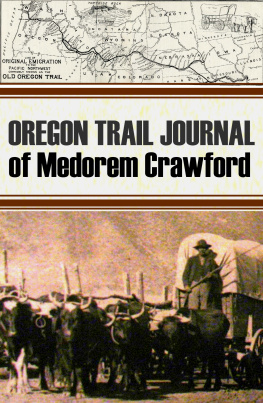


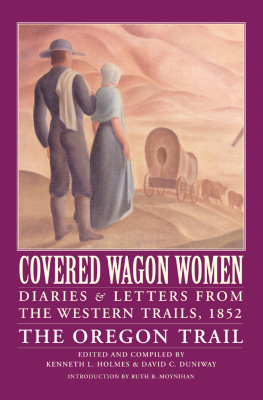
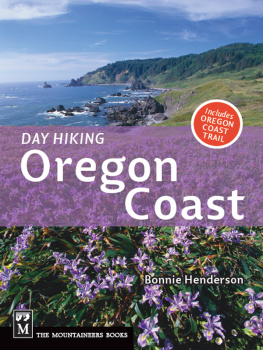

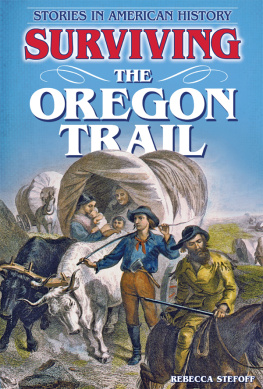

 RinkerBuck
RinkerBuck